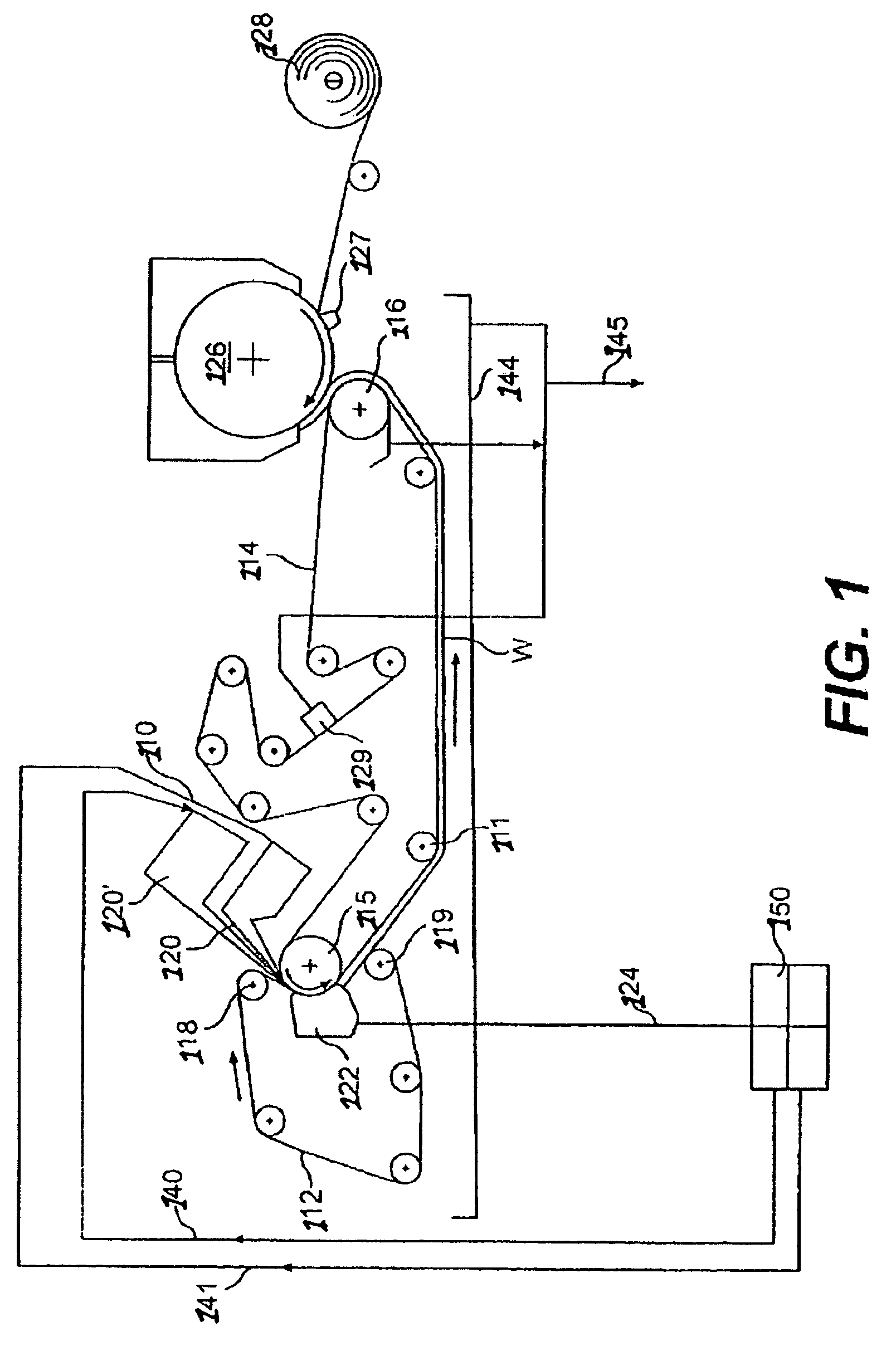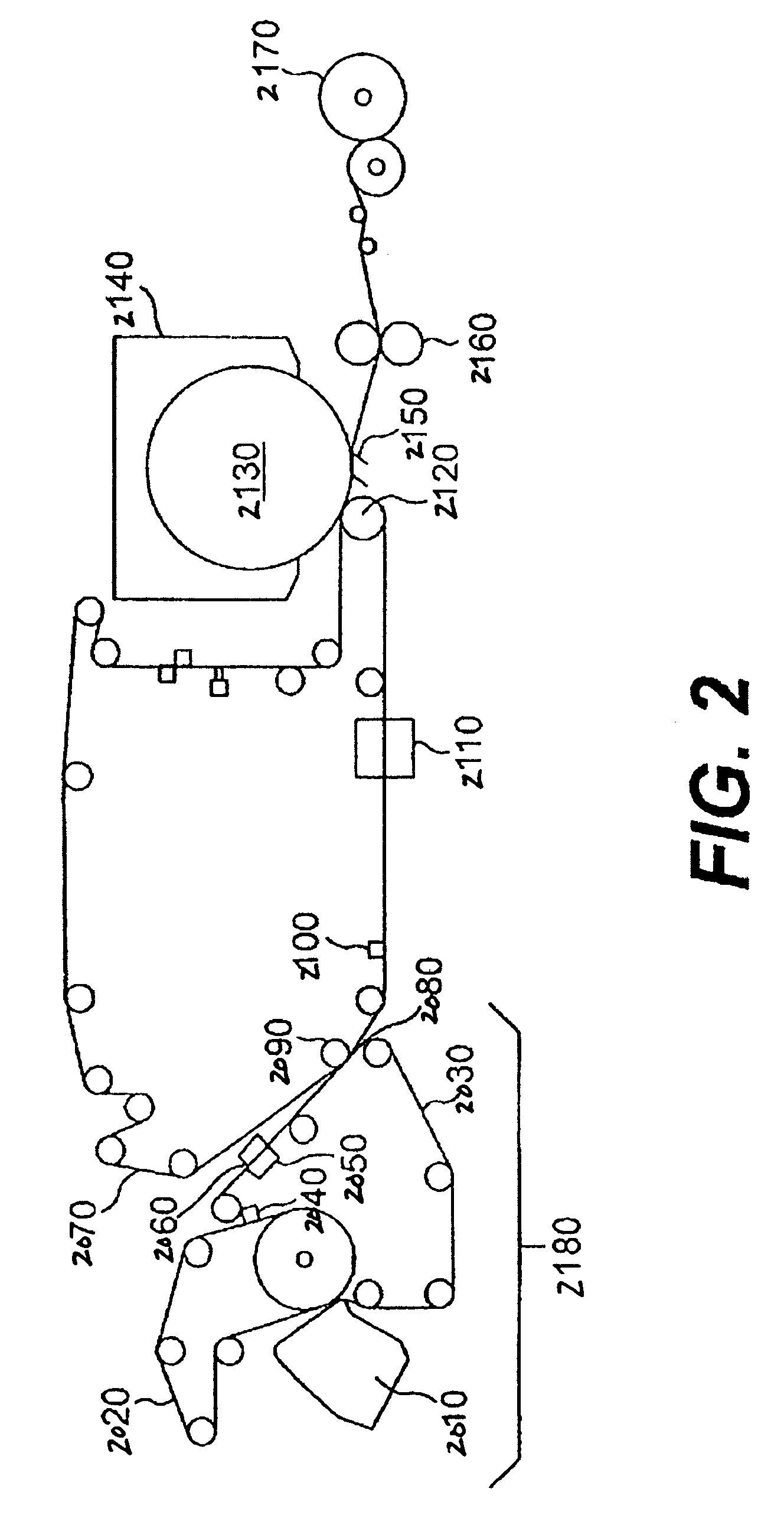Methods for creping paper
a creping paper and paper technology, applied in the field of creping paper, can solve the problems of paper webs not adhering sufficiently, paper webs are not perceived soft and inimical to consumer acceptance, and achieve the effect of reducing the build-up of creping adhesives
- Summary
- Abstract
- Description
- Claims
- Application Information
AI Technical Summary
Benefits of technology
Problems solved by technology
Method used
Image
Examples
example 1
Production of Tissue Paper
[0075]According to one test on a first machine, in a first setup (“Setup A”), a 0.05% solids aqueous solution of a creping aid system comprising a creping adhesive and a polyethylene creping modifier was sprayed on the surface of a Yankee dryer. The creping aid system comprised between about 89% and about 94% creping adhesive and between about 6% and about 11% polyethylene creping modifier by volume. The solids of the creping aid system, including the solids from both the creping adhesive and the creping modifier, comprised between about 63% and about 70% PAE Resin, between about 17% and about 19% plasticizer chemistry, between about 6% and about 11% polyethylene, and between about 5% and about 9% release agent. Thus, for example, between about 80% to 89% by weight of the solids come from the creping adhesive product comprising the PAE and / or plasticizers, and the remaining about 11% to 20% of the solids come from the polyethylene creping modifier comprisin...
example 2
Tin Cup Studies
[0083]Film property evaluations were conducted by preparing solutions in glass vials which were mixed for 30 seconds. The ratios of the components were based on the total solids of the solution. Films were formed by weighing a mixture of each solution into an aluminum weighing dish that will dry to 0.5 grams of solids. The solutions were dried for 2 hours in an oven at 110° C. The dishes were removed from the oven and allowed to equilibrate to atmospheric conditions for 10 minutes prior to evaluations of dry tack, flexibility or hardness, and homogeneity.
[0084]Dry tack was evaluated as follows. After the oils were removed from the ball of the thumb of the tester using acetone, the thumb was pressed onto the film surface firmly. The thumb was lifted and it was noted whether the adhesive stuck to the thumb and the weighing dish either lifted off the table or stayed on the table. Those that stuck to the thumb and were lifted off the table for longer than 5 seconds were c...
PUM
| Property | Measurement | Unit |
|---|---|---|
| viscosity | aaaaa | aaaaa |
| average molecular weight | aaaaa | aaaaa |
| viscosity | aaaaa | aaaaa |
Abstract
Description
Claims
Application Information
 Login to View More
Login to View More - R&D
- Intellectual Property
- Life Sciences
- Materials
- Tech Scout
- Unparalleled Data Quality
- Higher Quality Content
- 60% Fewer Hallucinations
Browse by: Latest US Patents, China's latest patents, Technical Efficacy Thesaurus, Application Domain, Technology Topic, Popular Technical Reports.
© 2025 PatSnap. All rights reserved.Legal|Privacy policy|Modern Slavery Act Transparency Statement|Sitemap|About US| Contact US: help@patsnap.com


